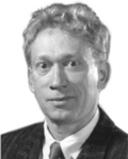Autism
Understanding the Interaction Between Autism and Sexuality
Those with more autistic traits seem to be more likely to identify as bisexual.
Posted August 13, 2021 Reviewed by Tyler Woods
Key points
- Compared with control groups of individuals with few or no autistic traits, individuals high on autism are more likely to identify as bisexual.
- A significant proportion of those high on autism reject traditional sexual categories and endorse either no label or an asexual identity.
- Both autism and sexuality exist along a spectrum and whether they are biologically or environmentally related is a source of controversy.

There’s been a striking and ongoing awareness of neurodevelopmental disorders over the past several decades—especially of autism spectrum disorder (ASD). Our understanding has evolved to the point at which we no longer have the dichotomy of individuals being either neurologically autistic or “normal,” but rather the extent to which individuals are “on the spectrum.” The range is from so severe that the individual is unable to function intellectually or socially without great assistance to the individual who is mildly impaired and able to function within society to the individual who excels at a genius level in particular areas such as science, music, or mathematics. With our increased awareness of the spectrum nature of autism has come both a parallel proliferation in diagnoses, sometimes with co-occurring incidence of attention deficit hyperactivity disorder (ADHD), mood disorders such as anxiety or depression, and obsessive-compulsive disorder (OCD), and an appreciation that autism can confer “a risk for a broader range of subtler difficulties in social communication and unusual patterns of interests and activities that are referred to as autistic traits” (see Rudolph and colleagues).
With this complexity, some researchers and psychological/medical clinicians have speculated about one developmental area across the range: the relationship between ASD and sexuality. Though there is limited evidence about possible connections, patterns are beginning to form that have both theoretical and practical implications.
The Study
Researchers Christiane Rudolph and colleagues explored the relationship between ASD and sexual orientation identity in the Stockholm Public Health Cohort dataset. The Stockholm is a longitudinal public health study that began in 2002 and includes a 2010 survey with over 30,000 participants 18 years or older. The self-administered questionnaires included the Autism Spectrum Quotient measure. Sexual orientation was assessed based on how participants identify given four options: heterosexual, homosexual, bisexual, or none of the above. Two major findings were reported.
- Compared with a control group consisting of those with few or no autistic traits, individuals high on ASD were more likely to identify as bisexual.
- A significant proportion of those with high ASD scores rejected a traditional gay, straight, or bisexual identity and endorsed either no label or an asexual identity.
They concluded that “autism is associated with a higher probability of minority sexual orientation, and perhaps with uncertainty about self-identification or a defiance of traditional ways of categorizing sexual orientation.”
Earlier studies by Jeroen Dewinter and colleagues with Dutch and Belgian individuals had found that increases in bisexual identity, attractions, and relationships and in gender non-conforming feelings were more common among ASD than non-ASD women, but this relationship did not hold among ASD men. This sex difference needs to be further explored—and explained.
Interpretations
More controversial than these findings are speculations that account for the unique pattern among ASD individuals. At least two broad perspectives were offered by Rudolph and colleagues.
- The relationship could be due to genetics: the existence of genes accounting for both atypical neurological factors (ASD) and atypical sexuality (non-heterosexual). Or, the biological relationship could be due to prenatal hormones and these “common fetal origins between autistic traits and minority sexual orientation” drive this relationship (and, perhaps as well, gender dysphoria).
- Given their non-traditional neurological development, ASD individuals might also consequentially defy traditional means of expressing and identifying their sexuality such that “customary sexuality” might be construed as inappropriate or inadequate to express that which ASD individuals experience. That is, once an outlaw in one domain, maybe an outlaw in other domains. Rudolph and colleagues expanded this view by suggesting that the common factor between ASD and sexuality could be ambivalence about their cognitive/personality traits and their sexuality.
The evidence that ASD individuals also tend toward asexuality fits with both biological and environmental explanations.
My Perspective
Possible links between autism and sexuality are largely speculative with little convincing research that supports one over others. I suspect that the coming years will help us disentangle the relative contribution of biological and environmental factors. My bias is that biological factors will prove more persuasive and credible. For example, it might be that the more “autistic-causing” genes characteristic of those along the spectrum the more likely one is to identify with a nontraditional sexuality; or, perhaps, there are only a few genes that impact both ASD and nonheterosexuality. In terms of prenatal hormones, most likely the connection between genes and prenatal hormones as influential agents is so interconnected that their relative effect cannot be disconnected.
This leads me to another observation: I’m struck by the fact that both ASD and sexuality are less about categorical traits of individuals than they are about spectrum characteristics of individuals. This is particularly relevant for controversies and inconsistencies in research on autism: Are the ASD participants in research, almost by definition, higher functioning individuals along the spectrum? How common are ASD findings in general derived from these self-selected individuals? Do results hold for those less highly operative in real life? Research studies vary in who they recruit and who completes the questionnaires. For example, are mildly affected ASD individuals more likely to be mostly straight or bisexual while those more highly affected likely to have no label or to be asexual? These are dilemmas difficult to resolve.
Similarly, is the relationship between autism and sexuality distorted because most researchers fail to conceptualize or assess sexuality as existing along a spectrum? When participants are limited in their sexuality selection to identifying as straight, bisexual, or gay, we are likely, by definition, distorting any and all findings derived from research data. For example, given that a bisexual person may be 90 percent attracted to one sex and 10 percent to the other, what does it mean to say that autism is associated with bisexuality? In addition, when assessing sexuality, are we referencing sex or romance and are we selecting identity, behavior, or attraction? My own review of research on bisexuality reveals very different outcomes that are dependent on these factors.
Until these issues are resolved, we are hardly beyond the cusp in our understanding of the relationship between ASD and sexuality. Any results available at this time might not be readily generalizable to the full range of the autistic and sexual spectrums.
References
Rudolph, C.E.S., Lundin, A., Åhs, J.W. Dalman, C., & Kosidou, K. (2018). Sexual orientation in individuals with autistic traits: Population based study of 47,000 adults in Stockholm County. Journal of Autism and Developmental Disorders, 48, 619–624. doi:10.1007/s10803-017-3369-9
Sexuality in adolescent boys with autism spectrum disorder: Self-reported behaviours and attitudes. Journal of Autism and Developmental Disorders, 45, 731–741. doi:10.1007/s10803-014-2226-3
Savin-Williams, R.C. (2021). Bi: Bisexual, Pansexual, Fluid, and Nonbinary Youth. New York: New York University Press




